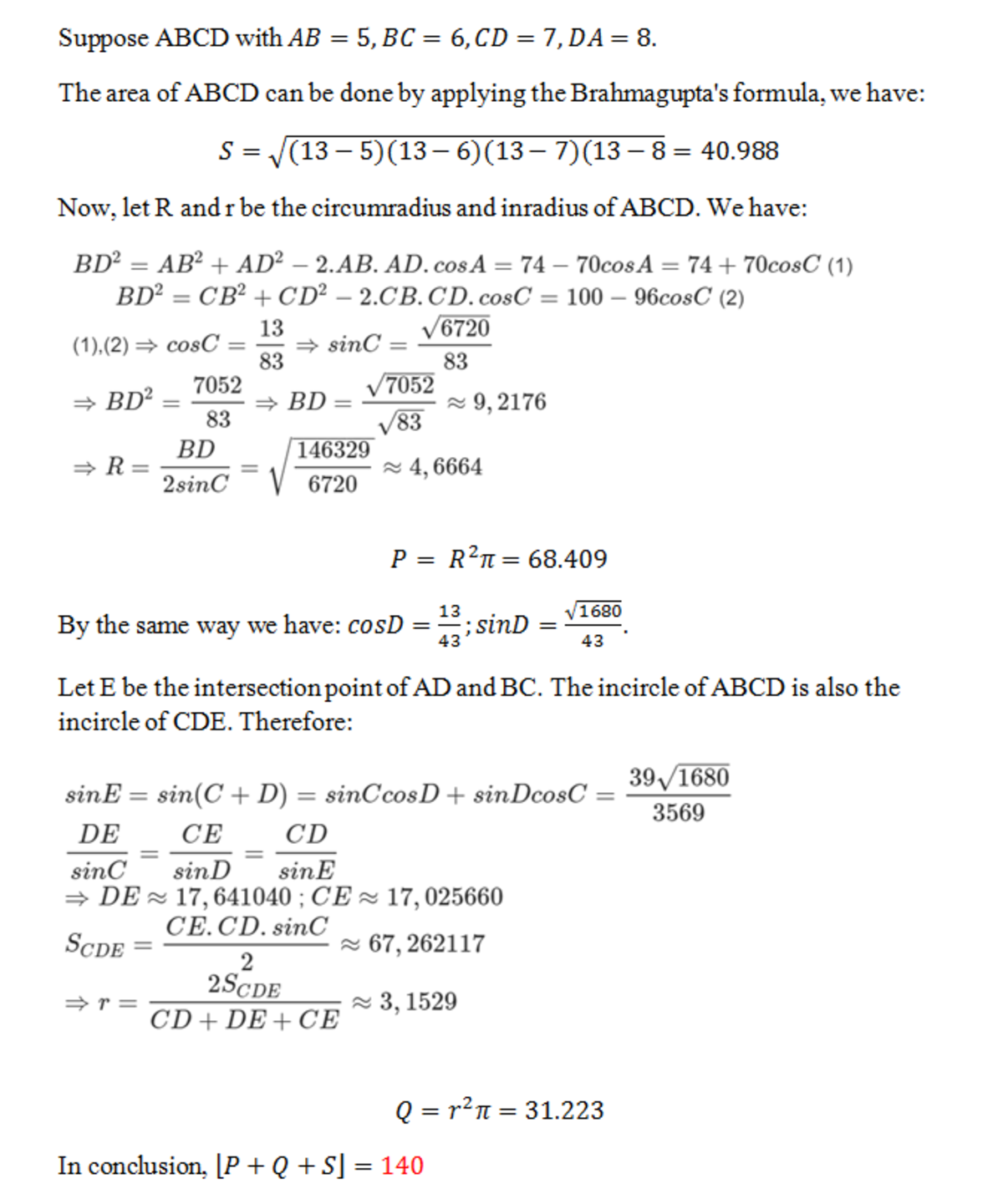Three in One
A cyclic quadrilateral has side lengths of 5, 6, 7 and 8. Suppose S represents the area of the quadrilateral, P represents the area of its circumcircle and Q represents the area of its inscribed-circle. Determine the value of ⌊ S + P + Q ⌋ .
You may use the approximation of π ≈ 3 . 1 4 1 6 .
The answer is 140.
This section requires Javascript.
You are seeing this because something didn't load right. We suggest you, (a) try
refreshing the page, (b) enabling javascript if it is disabled on your browser and,
finally, (c)
loading the
non-javascript version of this page
. We're sorry about the hassle.
1 solution
Let AB=w, BC=x, CD=y, DA=z. S= w+x+y+z=13. R is circumradius. r is in radius.
By Bramagupta's Formula, A q u 2 = ( S − w ) ∗ ( S − x ) ∗ ( S − y ) ∗ ( S − z ) = 1 6 8 0 . A q u = 4 0 . 9 8 7 8 0 3 0 6 . R 2 = 1 6 ∗ A q u 2 ( w ∗ x + y ∗ z ) ( w ∗ y + x ∗ z ) ( w ∗ z + y ∗ x ) . A R = 3 . 1 4 1 6 ∗ R 2 = 6 8 . 4 0 8 8 0 7 5 . r = S A q u . A r = 3 . 1 4 1 6 ∗ r 2 = 3 1 . 2 7 3 8 4 6 1 5 . A q u + A R + A r = 1 4 0 . 6 7 0 4 5 6 7 .
Log in to reply
I appreciated this solution! Much better than mine
We might use S = a b c d , which is the area of a tangential and cyclic quadrilateral.
Log in to reply
Definitely, since the four sides are successive numbers
Log in to reply
Unfortunately, I didn't find a counter example to "since the four sides are sucessive numbers". But I just learnt (about ten minutes ago) that all quadrilaterals which is tangential and cyclic are called Bicentric Quadrilateral and S = a b c d is always true to them. Bicentric quadrilateral post on Wikipedia shows some interesting properties.
Log in to reply
@Pedro Arantes – You can obviously figure out that so I won't explain (5,6,7,8 are successive numbers). But thanks for acknowledging me about the bicentric quadrilateral!
May you support your solution by a diagram?
The hardcore way:
fixed CD=8, DA=7, so that ABCD can contain an inscribed-circle